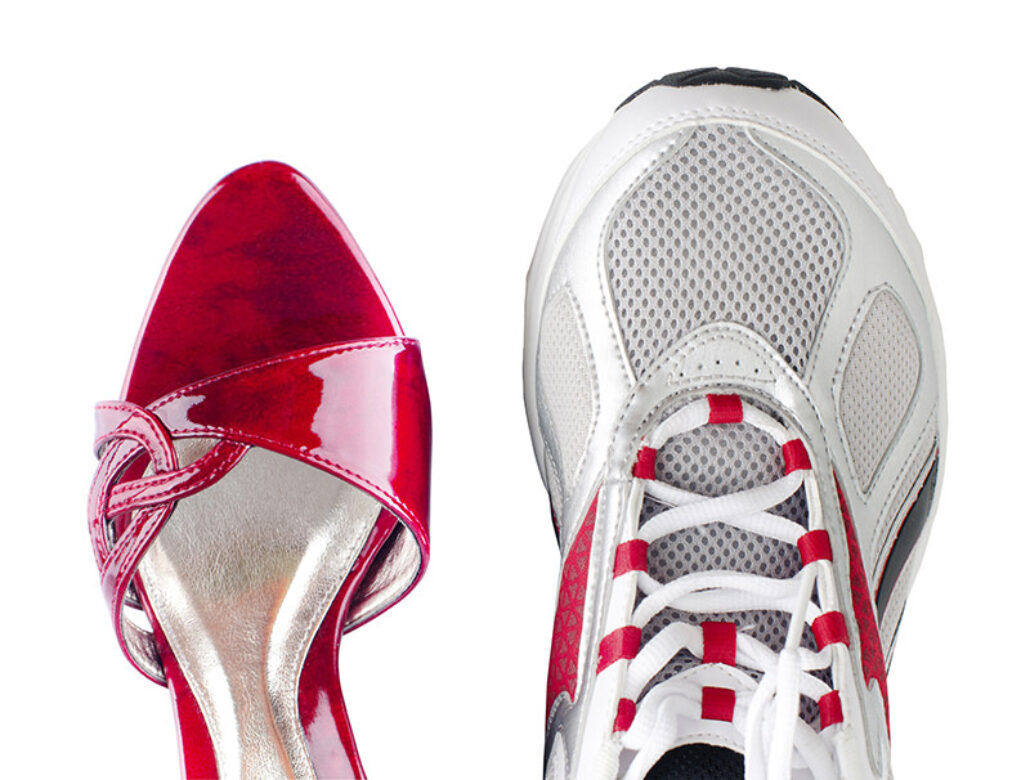A penchant for high heels can make women particularly susceptible to neuroma injuries. We tell you which symptoms to watch for, and how to handle early signs of injury.
Repetitive pounding goes hand in hand with a runner’s training routine, and puts feet at risk. Young professional female runners—especially those with flat feet—may be making footwear choices that put them at greater risk of neuroma, a progressive nerve disorder of the feet.
Although neuromas can develop in different areas of the foot, the most common occurrence is Morton’s neuroma, a thickening and swelling of the nerve at the base of the third and fourth toes. Women who switch between narrow, pointed-toed heels at work and running shoes for exercise are particularly susceptible. Wearing heels during the day compresses and crunches the toes in the front of the shoe. Then, running exerts repetitive stress on the forefoot to further irritate the nerve.
In the early stages of neuroma, patients frequently complain that it feels as though something is stuck inside the ball of their foot. A neuroma will enlarge as the condition progresses, causing tingling, burning, and numbness at the base of the toes. Without treatment, symptoms become more intense, the nerve enlarges, and temporary damage can become permanent. If you experience these symptoms for a few days without relief, it’s time to consult a foot specialist.
X-rays cannot detect a neuroma; diagnosis is based on a physical examination to palpate the nerve. Treatment options depend on how advanced the condition is. In the early stages, footwear padding reduces pressure on the nerve, swelling is treated with ice and over the counter anti-inflammatories, and prescription or custom orthotic devices may be used to reduce compression. Patients may be steered to wider shoes with low heels, and advised to ease up on their running until the condition improves. In severe cases, outpatient surgery to release or remove the affected nerve is also an option.
The best way to handle a neuroma is to prevent the condition before it begins, or to treat it when symptoms first appear. With a little preventative care, you can enjoy a long injury-free running season.
Summit Orthopedics offers personalized foot and ankle expertise
Our fellowship-trained foot and ankle physicians understand that your mobility depends on the health of your feet and ankles. If you have suffered an injury or are experiencing symptoms that make walking painful, our team of foot and ankle specialists can help with conservative treatment, seasoned surgical teams, and expert rehabilitation support. Summit Orthopedics specialists have the expertise to evaluate your discomfort and develop a plan to quickly and safely get you back on your feet and on your way.
Start your journey to optimal foot health. Find your foot and ankle expert, request an appointment online, or call us at (651) 968–5201 to schedule a consultation.
Summit has convenient locations across the Minneapolis-St. Paul metro area, serving Minnesota and western Wisconsin. We have state-of-the-art centers for comprehensive orthopedic care in Eagan, MN, Plymouth, MN, Vadnais Heights, MN, and Woodbury, MN, as well as additional community clinics throughout the metro and southern Minnesota.
